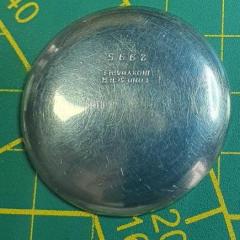Repair Rub In Jewel Setting
-
Recently Browsing
- No registered users viewing this page.
-
Topics
-
Posts
-
Getting a lathe with some collets might be cheaper than a Platex these days. And a lathe is a more versatile tool to have. Don't fight it, just get one.. 😉
-
@dnhb i have moved this topic as it had answers and hidden the duplicate post. If you have accidentally created in the wrong section please report the post requesting the moderator team to move it and we will move it for you. Tom
-
By nevenbekriev · Posted
You know there is a spring in wind screen wipers. You can use it to make the anchor out of it, no thermal treatment needed. -
That was in the 50's... imagine how much you would be saving at today's prices. A bargain! 😄
-







Recommended Posts